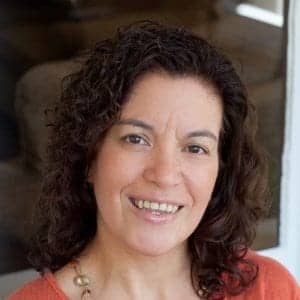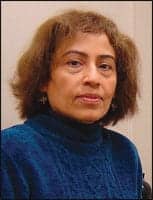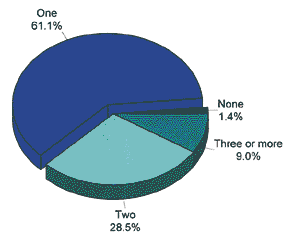Dear Editor,
I am writing with regard to the article by Robert Traynor, EdD, MBA and James Hall III, PhD, titled, “Competing in a New Era of Hearing Healthcare” from the November 2019 edition of the Hearing Review.
I greatly respect Drs Traynor and Hall and their contributions to audiology and hearing science. They are true legends in our profession. It is because of this fact that some of the statements and recommendations in this piece cause me so much consternation.
I completely agree with certain aspects of the piece, specifically the value of speech-in-noise testing and looking at the whole patient and their comorbidities in our evaluative approach. Where I differ from the authors is in their assertion that every audiologist, in every state and clinical situation, can and should use “more formal approaches” (which was not defined) to screen for things such as kidney disease, depression, and dementia. I can tell you, from previous experience while on the Audiology Quality Consortium and a state licensure board, that every state does not allow for an audiologist to provide every type of screening and/or create an associated care plan. Also, in states, like mine, where these types of screenings can be performed by an audiologist, there are education and training requirements that must be completed prior to embarking on these screening procedures. Encouraging these actions, without clarify these specific points in the article can put an audiologist in a potentially untenable situation. My advice is that audiologists should consult their state scope of practice and/or licensure board for clarification as to their ability to perform healthcare screenings outside of the auditory and vestibular systems.
Also, while I agree that our diagnostic approach needs a 21st century makeover, I wholeheartedly disagree that EVERY patient needs EVERY procedure in our toolbox at every visit. Your article calls for the “routine application of objective auditory techniques.” Instead, I believe that audiologists should practice audiology. What I mean by that is that audiologists should conduct a comprehensive case history and have patients complete hearing, tinnitus and/or vestibular inventories and, from that, develop an evaluative approach specific to that patient and their audiologic and vestibular needs.
Insurers do not generally cover “routine” or standing protocols. Payers cover the testing deemed medically reasonable and necessary. In other words, they cover the procedures, for each specific patient, that are required, based upon the existing evidence, to diagnose and provide treatment options for a medical or surgical condition. Otoacoustic emissions (OAEs) and immittance testing are not clinically appropriate for every patient’s chief complaint or symptom. Audiologists should, instead, have the capacity to refer to a colleague or, preferably, personally provide immittance testing, evoked potentials, OAEs, vestibular assessment, auditory processing, and speech-in-noise testing when audiologically and clinically appropriate and medically necessary of a specific patient and their symptoms and comorbidities. Doing testing just because we can, on every patient, increases clinical inefficiencies and healthcare costs to both the patient and the system. Also, when procedures are overutilized, coverage and reimbursement frequently become more limited.
Audiology has many opportunities available to us. I agree that many of those opportunities surround expanding our clinical and therapeutic repertoire beyond an audiogram and hearing aids. I believe though that there is a responsible way to approach differentiation. The first step is to address limitations, through advocacy, that exist in state scope of practice. Second, we need to educate AuD students and practicing audiologists in clinical decision making and evidence based practice. It is important that audiologists know and can defend, in their reports and documentation, the clinical rationale for each procedure. Stating “Dr Traynor and Dr. Hall told me to do everything on every patient” will not hold up in an audit. We need to be able to communicate the “why.”
I look forward to a productive dialogue on how to move audiology forward within the changing landscape of hearing and balance care.
— Kim Cavitt, AuD, Audiology Resources, Inc

The authors reply:
At the outset, we express our appreciation to Dr Cavitt for her interest in our article and her ongoing commitment to coding and reimbursement issues in audiology. It is, of course, essential for all audiologists to comply with state and federal laws, as well as insurance regulations, related to our profession. We are also convinced that audiology must advance often outdated clinical practice patterns if our profession is to survive and, better yet, thrive. There is currently a tremendous amount of pressure on practice owners and clinicians to offer more value to their patients’ clinical experience. Differentiation of the services offered in addition to products is perhaps the most viable and effective option for enhancing patient clinical experience.
We suspect that Dr Cavitt and our other audiology colleagues agree with this basic philosophy, but we may differ in our strategies for using differentiation to add value to our practice. In Part 2 of the practice differentiation discussion in the November issue of Hearing Review, we addressed comorbidity screening and monitoring, as well as the importance of updating the diagnostic hearing evaluation to be consistent with best practices. Here we respond to statements in Dr Cavitt’s letter to the editor, specifically: “Where I differ from the authors is in their assertion that every audiologist, in every state and clinical situation, can and should use ‘more formal approaches’ (which was not defined) to screen for things such as kidney disease, depression, and dementia…[and] while I agree that our diagnostic approach needs a 21st century makeover, I wholeheartedly disagree that EVERY patient needs EVERY procedure in our toolbox at every visit. Your article calls for the ‘routine application of objective auditory techniques.’”
First, it is entirely appropriate and consistent with best practice for audiologists to remain vigilant for patients at risk for comorbidities. Audiologists can identify possible comorbid conditions through the history and the patient’s existing medical records. These simple steps are long-standing for identification of children at risk for (or suspected of) hearing loss and are well within the scope of audiologic practice everywhere.
We clearly implied in our article adherence to a “routine or standard protocol.” Of course, every patient in a clinical setting does not need to be evaluated with every procedure available to audiologists, but every patient should be evaluated with all appropriate procedures, based on what is medically necessary, which is essentially a change noted by the patient in their hearing acuity, tinnitus, or balance function. We did not suggest or imply that every patient on every visit be given the entire suggested protocol. We did recommend the application of a comprehensive diagnostic protocol on the patient’s first visit. Medical necessity is based largely on history and chief complaint(s), and comorbid conditions. Thus, each patient should be evaluated with the audiological procedures that are most likely to yield a prompt and accurate diagnosis that contributes to an effective management plan. For many patients, objective test procedures offer greater sensitivity and specificity to auditory dysfunction involving the middle ear, inner ear, or neural pathways than pure-tone and simple speech audiometry procedures. In our experience, third-party payors cover specific audiological procedures that are most likely to lead to an accurate diagnosis of auditory and/or balance dysfunction and hearing loss and timely appropriate management. The list of such procedures includes aural immittance to diagnose middle ear dysfunction, OAEs in patients at risk for cochlear dysfunction and related disorders (eg, tinnitus, ototoxicity testing), and speech-in-noise procedures in patients at risk for neural auditory dysfunction (including APD) as well as hidden hearing loss. The protocol for subsequent visits naturally varies depending upon medical necessity.
We recommended in our article careful selection of test procedures for each individual patient with the goal of enhancing diagnostic accuracy, effectiveness of audiological management, and patient outcome. We agree with Dr Cavitt that performing many tests just because we can, on every patient, increases clinical inefficiencies and healthcare costs, to both the patient and the system.
Finally, throughout our article we stressed the rationale for application of appropriate, research-based behavioral and objective test procedures. Each audiologist must decide which procedures are most appropriate and medically necessary for each patient.
— Robert M. Traynor, EdD, MBA, and James W. Hall III, PhD
References
1. Traynor RM, Hall III J. Competing in the new era of hearing healthcare part 2: Differentiating a practice with comorbidity screening, monitoring, and diagnostics. Hearing Review. 2019;26(11):16-19.
About the authors:
Robert (Bob) Traynor, EdD, MBA, FNAP, is an audiologist and former private practice owner, and has recently established Robert Traynor Audiology, LLC, based in Fort Collins, Colo, a consulting and expert witness firm. James (Jay) Hall, III, PhD, is an internationally recognized audiologist who has held clinical and academic audiology positions at major medical centers, and has served in leadership roles in the American Academy of Audiology.
Kim Cavitt, AuD, was a clinical audiologist and preceptor at The Ohio State University and Northwestern University for the first 10 years of her career. Since 2001, she has operated Audiology Resources Inc in Chicago, which provides comprehensive operational, compliance, and reimbursement consulting services to hearing healthcare providers. She is a Past President of the Academy of Doctors of Audiology (ADA) and has served in various positions on the Audiology Quality Consortium (AQC), Illinois Academy of Audiology, and the State of Illinois Speech Pathology and Audiology Licensure Board.






In the context of this discussion, we need to remember and acknowledge that Doctors of Audiology are a branch of the Healing Arts Doctoring professions who, by definition, are authorized to diagnose and treat. The Au.D. degree is a general practice degree that establishes audiologist’s position in healthcare as point-of-entry primary care doctors for audio-vestibular disorders. The use of screening tools to identify comorbidities is a natural extension of an audiologist’s role and scope of practice as a healthcare team member to enhance quality healthcare and potentially accelerate the early identification of disease processes that require appropriate medical attention. This is our duty, obligation, and responsibility to our patient’s.